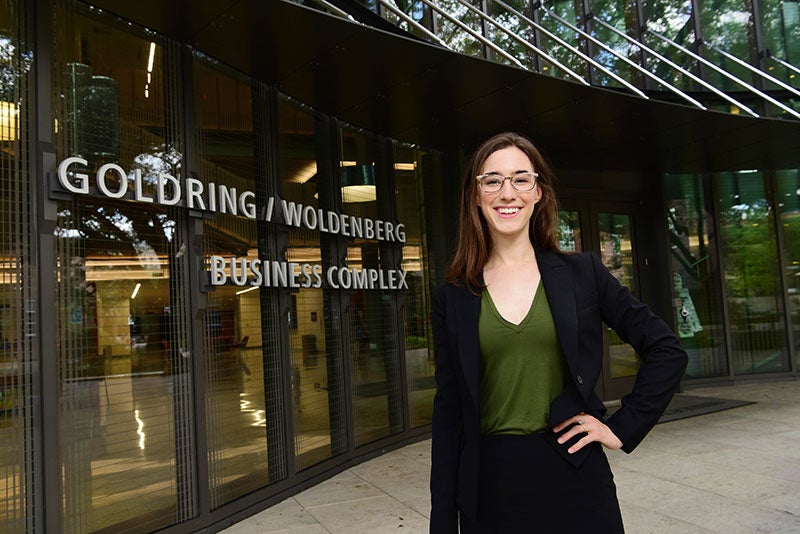
Assistant Professor of Accounting Lisa LaViers and colleagues manually inspected the 2018 proxy statements of every firm in the S&P 1500, documenting and categorizing voluntary CEO pay ratio disclosures and analyzing their effect on share prices. Their study, “CEO Pay Ratio Voluntary Disclosures and Stakeholder Reactions,” is forthcoming in The Review of Accounting Studies.
In 2018, thanks to a new Security and Exchange Commission disclosure rule, Marathon Petroleum Corp. revealed that CEO Gary Heminger earned 935 times that of the company’s median employee. The eyebrow-raising ratio dwarfed that of refining industry peers like Valero Energy Corp., whose CEO Joseph Gorder earned just 108 times that of its median employee.
But Marathon did more than just report the ratio. It noted that the company was the only refiner with a substantial retail presence and its median employee calculation included thousands of associates at its Speedway convenience stores, many of whom worked only part time. To help shareholders more accurately compare its pay ratio with that of peers, Marathon proposed an alternative ratio that excluded retail workers, resulting in a more palatable ratio of 156-to-1.
Marathon wasn’t the only company that supplemented its CEO pay ratio with additional information. Despite bitter and vociferous complaints from industry groups about the adoption of the rule, 65% of firms in the S&P 1500 provided disclosures that went above and beyond SEC requirements.
Those voluntary disclosures caught the attention of Lisa LaViers, assistant professor of accounting, whose research focuses on issues related to human capital management and pay transparency.
“I thought it was really unusual that firms were disclosing more than they were required to about their CEO pay ratios given how hard they had fought against having to disclose the number at all,” LaViers says.
To better understand the phenomenon, LaViers and colleagues Jason Sandvik and Da Xu manually inspected the 2018 proxy statements of every firm in the S&P 1500, documenting and categorizing voluntary disclosures and analyzing their effect on share prices. Their paper, “CEO Pay Ratio Voluntary Disclosures and Stakeholder Reactions,” is forthcoming in The Review of Accounting Studies.
Perhaps unsurprisingly, the authors found that the firms most likely to provide voluntary disclosures were the ones with the highest ratios. More than 80% of firms with pay ratios higher than 238-to-1 supplemented their numbers with voluntary disclosures compared with just 54% of firms with ratios lower than 44-to-1.
High ratios can be an indicator of low pay fairness, which can lead to reduced firm value. LaViers says one reason firms provided additional disclosures was likely to mitigate the impact of an unfavorable ratio. Marathon excluded its retail employees, for example, in order to calculate a ratio it argued was more analogous with peers. Similarly, tobacco giant Universal Corp., whose CEO pay ratio was 2,429-to-1, explained that its median employee was an unskilled, seasonal worker located in the Philippines. If those low-paid, non-U.S. employees were excluded, the company said its ratio would drop to 206-to-1.
Shareholder reaction to voluntary disclosures was mixed. Investors on average had a positive reaction to firms with high ratios that provided firm-specific disclosures, such as additional information about its median employee or an alternative pay ratio the company said was more meaningful, but investors had significantly negative reactions to firms with high ratios that provided boilerplate voluntary disclosures, such as a compensation philosophy statement or a general disclaimer about the value of comparing ratios across firms.
“Firm-specific disclosures were likely viewed positively because they’re from firms that had something positive to say,” LaViers says. “On the other hand, boilerplate disclosures that were defensive and not very informative were viewed negatively, so investors were seeing through that.”
In the five years since the CEO pay ratio rule was introduced, the gap between CEO and median employee pay has continued to widen, leading some to question the value of the rule. A recent Bloomberg Op-Ed called the rule a failed experiment. LaViers, however, has a different take.
“No disclosure is perfect, but this is a good start,” she says. “How you explain and justify pay inequality in your firm matters to stakeholders. I think our paper shows that companies that can defend their pay ratios — that can defend their compensation practices and have meaningful things to say about it — are being rewarded by investors, and firms that have nothing positive to say are being punished.”
Ultimately, LaViers says she hopes the paper can offer insights to regulators as they grapple with the issue of pay transparency.
“It’s a complex area and the SEC knows it’s a complex area, because they’re currently debating what other pay disclosures should be required,” she says. “We hope that this paper can guide some of their understanding about what’s actually happening and what’s useful and not useful to investors and other stakeholders.”
